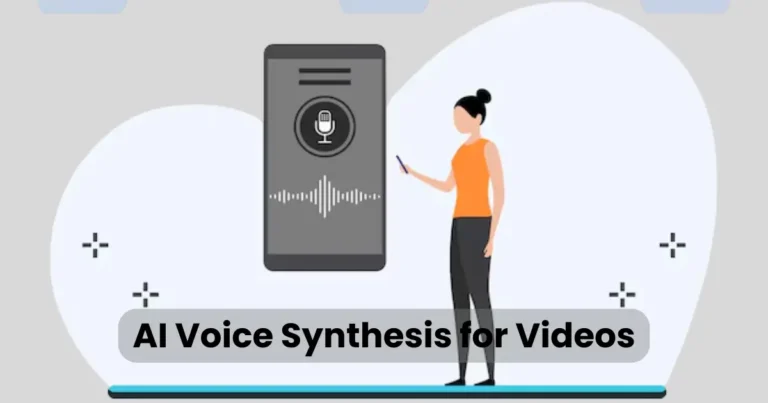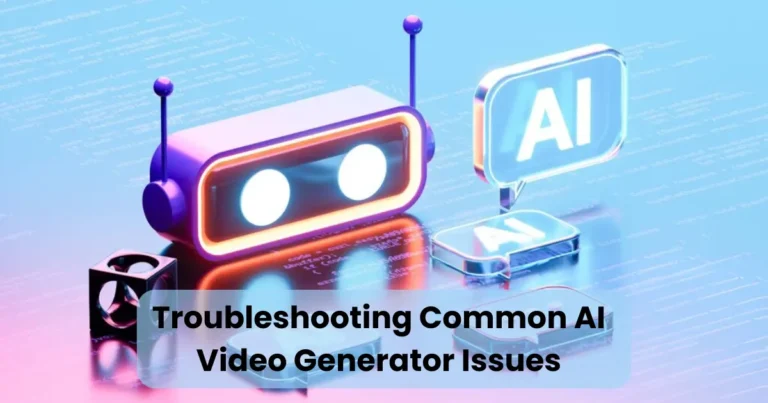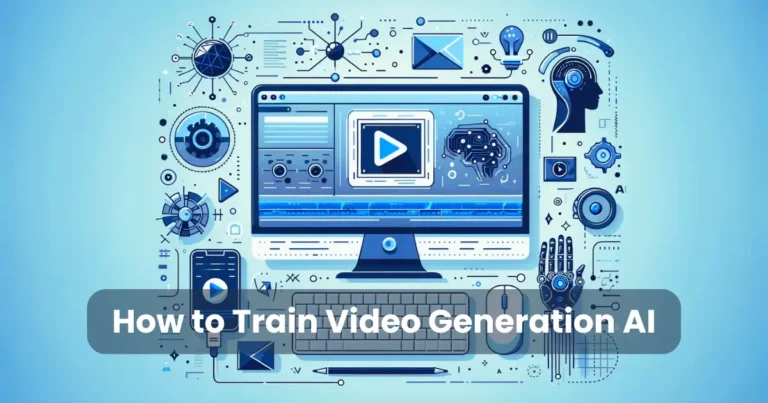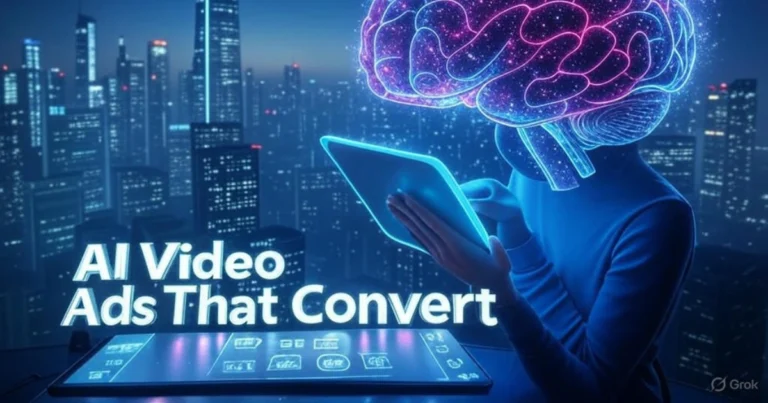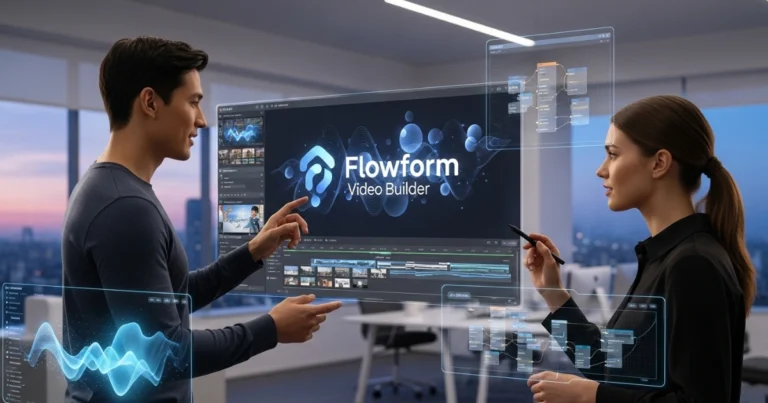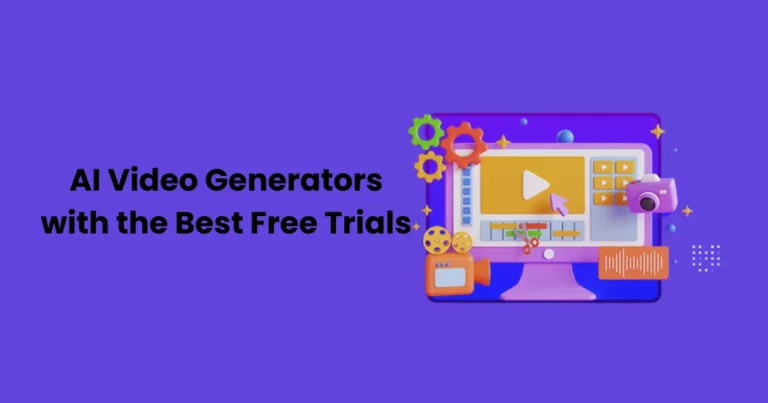AI-Generated Property Videos: A Complete Guide
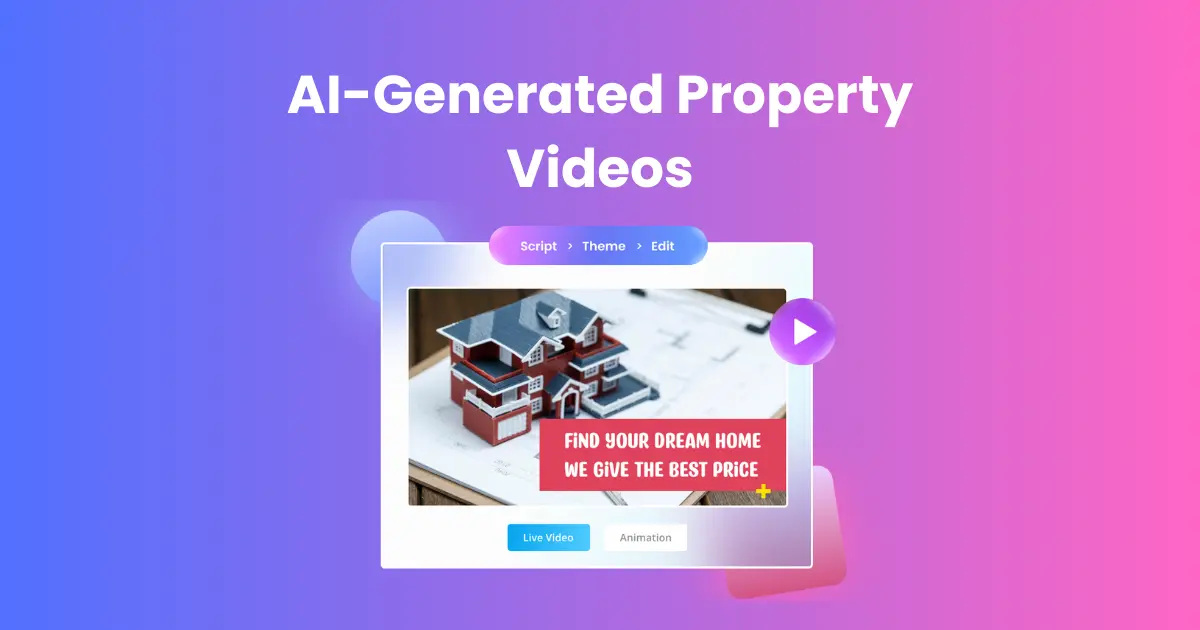
Contents
- 1 What Are AI-Generated Property Videos?
- 2 Benefits of AI-Generated Property Videos
- 3 How AI-Generated Property Videos Work
- 4 Best Practices for Creating AI-Generated Property Videos
- 4.1 1. Choose the Right AI Software
- 4.2 2. Optimize Video Length and Quality
- 4.3 3. Use Compelling Voiceovers and Captions
- 4.4 4. Highlight the Property’s Best Features
- 4.5 5. Customize the Video to Match Branding
- 4.6 6. Ensure Mobile-Friendliness
- 4.7 7. Test and Refine the Video
- 4.8 8. Add Interactive Elements
- 4.9 9. Embed Videos on Multiple Platforms
- 4.10 10. Monitor Video Performance and Optimize
- 5 SEO Optimization for AI-Generated Property Videos
- 5.1 1. Conduct Keyword Research and Implement Keywords
- 5.2 2. Optimize Video Titles
- 5.3 3. Write Compelling Video Descriptions
- 5.4 4. Add Tags and Keywords
- 5.5 5. Create Video Transcripts and Subtitles
- 5.6 6. Use Custom Thumbnails
- 5.7 7. Optimize Video File Name
- 5.8 8. Embed Videos on Real Estate Websites
- 5.9 9. Share Videos on Social Media and Other Platforms
- 5.10 10. Monitor Analytics and Make Adjustments
- 6 Challenges and Limitations of AI-Generated Property Videos
- 6.1 1. Lack of Creative Control
- 6.2 2. Quality of Automated Voiceovers
- 6.3 3. Dependency on Data Quality
- 6.4 4. Limited Ability to Adapt to Complex Properties
- 6.5 5. Inability to Convey Emotional Connection
- 6.6 6. Risk of Over-Reliance on Automation
- 6.7 7. Ethical Considerations and Authenticity
- 6.8 8. Technical Limitations and Compatibility
- 6.9 9. Initial Learning Curve
- 6.10 10. Cost of High-End AI Tools
- 7 Future Trends in AI-Generated Property Videos
- 7.1 1. Enhanced Personalization with AI
- 7.2 2. Integration of Virtual and Augmented Reality (VR/AR)
- 7.3 3. Real-Time Video Generation
- 7.4 4. Improved Voiceovers with Deep Learning
- 7.5 5. Increased Use of AI for Property Staging
- 7.6 6. Interactive and Shoppable Videos
- 7.7 7. AI-Powered Video Analytics and Insights
- 7.8 8. AI-Driven Video Marketing Campaigns
- 7.9 9. Advanced Video Customization Options
- 7.10 10. AI-Enhanced Social Media Integration
- 7.11 Conclusion
In the competitive world of real estate, AI-generated property videos have emerged as a game-changer for marketing and selling properties. By leveraging advanced artificial intelligence, these videos provide a faster, more efficient, and cost-effective way to showcase properties to prospective buyers. AI technology allows real estate agents to create high-quality videos automatically, without the need for expensive production equipment or a professional team.
As the demand for immersive and visually appealing content grows, AI-generated property videos offer an innovative solution to enhance property listings, drive engagement, and ultimately increase sales. With this technology, real estate marketing has become more dynamic, accessible, and impactful.
What Are AI-Generated Property Videos?
AI-generated property videos are digital videos created using artificial intelligence to automate the video production process. These videos typically showcase real estate properties by combining high-resolution images, video footage, text, and voiceovers, all generated with the help of AI tools. The AI software analyzes property features such as layout, size, and unique selling points, then automatically assembles a video that highlights these elements in an engaging and visually appealing manner.
How AI Transforms Real Estate Marketing
Traditionally, creating a property video involved professional videographers, editors, and a significant investment of time and resources. However, with AI-generated property videos, the process is largely automated, allowing real estate agents and property developers to produce professional-grade videos quickly and affordably. These AI tools use machine learning algorithms to improve the quality of the video over time, ensuring that the final product remains up to industry standards.
AI-generated videos not only save time and money but also allow real estate professionals to create multiple videos for various properties with minimal effort. The AI adapts to different property types, whether residential, commercial, or luxury, and can adjust its style to suit the target audience. This versatility makes AI-generated property videos a powerful tool in modern real estate marketing.
Benefits of AI-Generated Property Videos
AI-generated property videos offer numerous advantages for real estate professionals looking to enhance their marketing efforts. From cost-saving benefits to increased engagement, these videos are transforming the way properties are showcased. Below are some key benefits:

1. Cost-Effective Video Production
Traditionally, producing high-quality property videos required a significant budget for videographers, equipment, and editing. However, with AI-generated property videos, the cost of video production is greatly reduced. AI tools automate the video creation process, eliminating the need for external professionals and expensive gear.
2. Time-Saving Automation
Creating videos manually can take hours, if not days, to complete, especially when editing and fine-tuning each clip. AI-generated property videos drastically reduce this time by automating the entire process. Once the property details are entered, the AI software quickly assembles the video, incorporating images, video clips, and even voiceovers.
3. Enhanced Engagement and Conversion Rates
AI-generated property videos are designed to capture the attention of potential buyers by providing dynamic and interactive content. Research shows that listings with video content receive higher engagement than those without, as video allows viewers to experience the property virtually. By creating engaging and visually appealing videos, real estate agents can increase conversion rates, turning casual browsers into serious buyers.
4. High-Quality Virtual Tours
Virtual tours have become a crucial part of the property-buying experience, especially in today’s digital world. AI-generated property videos can incorporate 360-degree views, animations, and interactive elements to give prospective buyers a realistic and immersive experience. These videos allow buyers to explore the property remotely, providing them with a deeper understanding of the layout, design, and features without having to physically visit the property.
5. Consistent Branding and Customization
AI-generated property videos can be tailored to match a real estate agency’s branding and style. From custom intros and outros to voiceovers that reflect the agency’s tone, AI tools provide flexibility in video production. This consistency helps maintain brand identity across all marketing materials, strengthening the agency’s presence in the market. Additionally, AI software can adapt to different types of properties, adjusting the video style accordingly to best suit the target audience.
6. Accessibility Across Platforms
AI-generated property videos are designed to be compatible with various platforms, including real estate websites, social media, and online listings. The videos can be easily embedded, shared, or streamed on multiple devices, reaching a broader audience. This accessibility ensures that potential buyers can view the property video anytime, anywhere, making it easier for agents to connect with leads and increase visibility.
How AI-Generated Property Videos Work
The creation of AI-generated property videos involves a series of automated steps powered by advanced artificial intelligence, machine learning algorithms, and automation tools. The process is designed to streamline the production of high-quality videos, making it more accessible and efficient for real estate agents and property marketers. Below is an overview of how these videos are generated:

1. Inputting Property Data
The process begins by inputting basic property details into the AI software. This can include information like the property’s size, number of rooms, layout, amenities, and unique features. Users may also upload photos or video clips of the property, which will serve as the foundation for the video. These inputs are essential for the AI system to understand the key selling points of the property.
2. Analyzing and Processing Data
Once the data is input, the AI analyzes the information to identify important property features. This includes detecting the layout, distinguishing between different rooms, and highlighting key elements such as pools, gardens, or fireplaces. Using machine learning, the AI can also interpret the best angles and footage from the provided images and video clips, ensuring that the video captures the property in the most appealing way possible.
3. Video Creation and Assembly
Based on the analyzed data, the AI begins to generate the video. The software automatically selects and arranges the images or video clips into a coherent, professional-looking sequence. It then uses predefined templates to structure the video, including transitions, text overlays, and camera movements. The AI also determines the pacing and flow of the video, ensuring that it remains engaging and easy to follow.
4. Voiceover and Audio Integration
AI-generated property videos can include a voiceover, narrating key features of the property. The AI uses natural language processing (NLP) to generate realistic, human-like voiceovers based on the input data. These voiceovers can be customized with different accents, tones, and languages to suit the target audience. Additionally, background music and sound effects can be added to enhance the overall experience and make the video more engaging.
5. Customization and Branding
AI tools allow for easy customization of the property video to align with a real estate agency’s branding. Users can add logos, intros, outros, and specific color schemes that match the agency’s visual identity. Furthermore, AI tools can adapt to different types of properties, adjusting the style and pacing of the video based on whether the property is residential, commercial, or luxury. This level of customization ensures that each video feels unique and tailored to the property being showcased.
6. Final Output and Export
After the video is generated, the AI provides users with the option to preview and make adjustments. The video can be refined, if necessary, by modifying the voiceover, adding or removing clips, or adjusting the music. Once the video is finalized, it is exported in a format suitable for different platforms, such as social media, websites, and property listings.
7. Integration with Real Estate Platforms
Finally, AI-generated property videos can be easily integrated with real estate websites, listing platforms, and social media channels. Most AI software includes direct sharing options, allowing users to upload the video with minimal effort. Some platforms even provide analytics tools to track the video’s performance, helping real estate agents understand its impact on engagement and conversions.
Best Practices for Creating AI-Generated Property Videos
To ensure that your AI-generated property videos are effective and professional, it’s essential to follow best practices that optimize video quality, viewer engagement, and overall marketing performance. Below are some expert tips to help you create the best AI-generated property videos.

1. Choose the Right AI Software
Selecting the right AI tool is crucial for creating high-quality property videos. There are many AI video generation platforms available, and each may offer different features such as video templates, customization options, and integration with real estate platforms. When choosing AI software, consider factors such as ease of use, the level of automation, customization options, and compatibility with your existing tools. Popular real estate video platforms include tools like ReelSEO, Animoto, and Virtual Staging AI.
2. Optimize Video Length and Quality
While AI tools can generate videos quickly, it’s essential to ensure the video length is appropriate for its intended purpose. Ideally, property videos should be between 1 to 2 minutes long, providing enough time to showcase the key features of the property without overwhelming the viewer. Keep in mind that attention spans are short, so keeping the video concise while still informative is key. Also, ensure that the video quality is high, with clear, sharp visuals and smooth transitions.
3. Use Compelling Voiceovers and Captions
Voiceovers add an engaging, personalized touch to your AI-generated property videos. When selecting a voiceover, make sure it is clear, concise, and matches the style of the property. AI tools can generate realistic voiceovers in various accents and tones, so you can tailor the voice to suit the target market (e.g., formal for luxury properties or casual for family homes). Additionally, adding captions ensures the video is accessible to a wider audience, including those who may watch without sound. Captions also reinforce key points in the video, improving viewer retention.
4. Highlight the Property’s Best Features
When creating AI-generated property videos, it’s essential to highlight the unique selling points of the property. Use AI to focus on the best features—whether it’s a spacious backyard, modern kitchen, panoramic views, or a custom-designed bathroom. Ensure these features are showcased with appropriate video angles, close-ups, and slow-motion shots to grab attention. The AI will automatically identify key features, but adding your personal touch by customizing the video with emphasis on the most attractive attributes can make a significant difference.
5. Customize the Video to Match Branding
Consistency in branding is essential for establishing a strong identity. Customize your AI-generated property videos with your agency’s logo, color scheme, and contact information. Adding branded intros and outros also creates a polished and professional appearance. Many AI tools allow you to upload your logo and adjust the video’s colors to match your company’s visual identity. This attention to detail reinforces brand recognition and helps to build trust with potential buyers.
6. Ensure Mobile-Friendliness
A large portion of property buyers view listings and videos on their mobile devices. Therefore, it’s essential to ensure that your AI-generated property videos are optimized for mobile viewing. AI tools often offer settings that automatically adjust the video format and resolution to suit different screen sizes. Additionally, keep in mind that vertical videos often perform better on social media platforms, so consider creating multiple versions of the video in different formats (e.g., landscape for websites and social media and portrait for Instagram or TikTok).
7. Test and Refine the Video
Before publishing, always preview your AI-generated property video. Testing the video allows you to spot any areas that may need refinement, such as audio levels, transitions, or video quality. If needed, make adjustments to the video’s pacing, trim unnecessary content, or tweak the voiceover to better suit the message you want to convey. Some AI platforms offer real-time editing, enabling you to fine-tune the video to perfection before finalizing it.
8. Add Interactive Elements
To further engage viewers, consider adding interactive elements to your AI-generated property video. For example, you can include clickable hotspots or call-to-action buttons that allow viewers to schedule a property tour, request more information, or visit your real estate website. Interactive videos increase engagement and can drive higher conversion rates by making it easy for potential buyers to take the next step in the buying process.
9. Embed Videos on Multiple Platforms
Once your AI-generated property video is ready, don’t limit its reach to just one platform. Embed the video on your real estate website, post it on social media channels like Facebook, Instagram, and LinkedIn, and upload it to property listing sites like Zillow or Realtor.com. You can also share the video via email newsletters to keep leads engaged. Multi-platform distribution ensures that the video reaches a broader audience and maximizes its potential impact.
10. Monitor Video Performance and Optimize
After publishing the video, track its performance through analytics. Most real estate platforms, as well as AI software, offer built-in tools to measure video views, engagement, and conversion rates. By analyzing these metrics, you can gain insights into what works well and what needs improvement. If certain videos perform better than others, use them as benchmarks for future videos, adjusting factors such as pacing, tone, and content focus.
SEO Optimization for AI-Generated Property Videos
SEO (Search Engine Optimization) is a critical component of any digital marketing strategy, and when it comes to AI-generated property videos, optimizing them for search engines can significantly increase their visibility and effectiveness. To ensure your property videos rank well and are discoverable by potential buyers, it’s important to optimize the video content, metadata, and placement across various platforms. Below are key strategies to optimize AI-generated property videos for SEO.

1. Conduct Keyword Research and Implement Keywords
Just as with written content, keyword research is essential for SEO optimization in video. Identify relevant keywords related to the property and its location, as well as terms like “real estate video,” “virtual tour,” or “property walkthrough.” Use tools like Google Keyword Planner, SEMrush, or Ahrefs to find high-traffic keywords.
Once you have your list of target keywords, incorporate them strategically into the video’s title, description, and tags. The key is to avoid keyword stuffing—ensure the keywords naturally fit into the content, providing value to viewers while also making the video more discoverable.
2. Optimize Video Titles
The title of your AI-generated property video is one of the most important factors for SEO. It should be descriptive and include relevant keywords. For example, instead of just naming the video “Beautiful Home for Sale,” consider using a more descriptive title like, “Luxury 4-Bedroom Home for Sale in Downtown Jeddah | Virtual Tour.” This title is not only clear and informative but also contains valuable keywords like “luxury,” “4-bedroom,” “home for sale,” and “virtual tour,” which can help boost its searchability.
3. Write Compelling Video Descriptions
A well-written video description can significantly improve your SEO ranking. In the description, provide detailed information about the property, such as its features, location, and any special amenities. Ensure that your primary keyword appears early in the description, preferably within the first 100-150 words. A compelling description should also encourage viewers to engage with the content by including a call-to-action (CTA), such as “schedule a tour,” “contact for more details,” or “visit the property website.”
Additionally, include secondary keywords and variations of your main keyword to expand the reach of your video. For example:
- Main keyword: “AI-generated property video”
- Secondary keywords: “real estate video,” “virtual property tour,” “property walkthrough.”
4. Add Tags and Keywords
Tags and keywords play an essential role in optimizing AI-generated property videos for search engines. On platforms like YouTube, Vimeo, or real estate websites, tags help categorize the video and make it discoverable to users. Use a mix of broad and specific keywords related to the property. For instance, you can add tags like:
- AI-generated property video
- real estate video
- virtual tour [city name]
- luxury home tour
- [Property type] for sale [Location]
Including these tags allows the video to be associated with other similar videos and shows search engines that your content is relevant to the searched terms.
5. Create Video Transcripts and Subtitles
Search engines can’t “watch” videos, but they can read the text that accompanies them. Adding video transcripts or subtitles enhances SEO by providing search engines with additional text-based content that can be indexed. These transcriptions allow viewers who prefer to watch without sound to still engage with the content, while also improving the accessibility of the video.
For AI-generated property videos, including detailed transcripts that describe the property’s features and attributes ensures that the video is searchable by those looking for specific terms. Platforms like YouTube also provide closed-captioning (CC) options that can help improve video discoverability.
6. Use Custom Thumbnails
Custom thumbnails play a significant role in video SEO. Thumbnails are the first thing viewers see before clicking on the video, so it’s important to make them eye-catching and informative. Create custom thumbnails that visually represent the property, showcasing its best features. This can be a high-quality image of the property with text overlays, such as “Luxury Home Tour” or “Stunning City Views.”
Custom thumbnails improve the click-through rate (CTR) of your video, which is a ranking factor for search engines. An attractive thumbnail can help your video stand out among the competition.
7. Optimize Video File Name
Before uploading your AI-generated property video, make sure the file name is optimized for SEO. Avoid generic file names like “video1.mp4” and instead use descriptive file names that include relevant keywords. For instance, use something like “luxury-home-tour-jeddah.mp4” or “4-bedroom-property-for-sale-downtown.mp4.” This makes it easier for search engines to understand what the video is about and improves its chances of ranking higher in search results.
8. Embed Videos on Real Estate Websites
Embedding AI-generated property videos on your real estate website or listing page is an excellent way to improve SEO. This not only provides a more engaging experience for visitors but also enhances your site’s on-page SEO. When embedding, use relevant keywords in the video title and description on the page itself.
Additionally, ensure the video is embedded in the right context—alongside property details, contact forms, or CTAs that encourage viewers to take the next step, such as scheduling a tour or requesting more information.
Social media platforms like Facebook, Instagram, LinkedIn, and TikTok offer excellent opportunities to boost the SEO of your AI-generated property videos. Sharing the video on these platforms helps increase visibility and drives traffic back to your website. Use relevant hashtags and location tags to increase discoverability on social platforms.
Additionally, encourage viewers to share the video, as engagement metrics such as likes, shares, and comments play a role in the video’s ranking on social media platforms and even on search engines.
10. Monitor Analytics and Make Adjustments
After your video is live, track its performance through analytics tools provided by platforms like YouTube, Vimeo, or Google Analytics. Key metrics to monitor include views, engagement, click-through rate (CTR), and conversion rates. By understanding how viewers interact with your videos, you can optimize future video content and improve your SEO strategies.
Challenges and Limitations of AI-Generated Property Videos
While AI-generated property videos offer a wealth of benefits for real estate marketing, there are also several challenges and limitations that professionals should consider. Understanding these challenges can help agents, developers, and marketers make informed decisions about incorporating AI into their marketing strategies. Here are some of the key challenges and limitations of AI-generated property videos:

1. Lack of Creative Control
One of the main challenges of AI-generated property videos is the limited creative control. Although AI can automate video production, it may not always capture the unique essence of a property in the same way that a human videographer would. While AI can generate professional-looking videos, the artistic decisions—such as the choice of angles, the pacing of the video, and the emphasis on specific features—are limited by the software’s algorithms. This can result in videos that may lack the personal touch or creativity that human creators bring to a project.
2. Quality of Automated Voiceovers
AI-generated voiceovers have come a long way in terms of naturalness and clarity. However, they can still sound robotic or lack the nuance and emotion of a human voiceover. This can be a significant limitation when trying to convey the charm and unique selling points of a property. For high-end or luxury properties, a human voiceover may be preferred to add warmth, professionalism, and authenticity to the video, which an AI-generated voice might struggle to replicate.
3. Dependency on Data Quality
The quality of the output in AI-generated property videos heavily depends on the data input. If the images, videos, or property details provided to the AI are of low quality, the final video will reflect this. Low-resolution photos or poorly shot video clips will lead to grainy or unclear visuals in the final product. For AI tools to generate the best possible video, high-quality media must be used as input, which may require additional effort or resources from real estate professionals.
4. Limited Ability to Adapt to Complex Properties
AI-generated property videos are highly effective for standard property types and layouts. However, when dealing with more complex properties, such as custom-designed homes, multi-story buildings, or those with intricate layouts, AI tools may struggle to accurately represent the property’s true features. For example, AI might not always capture unique architectural elements or the ambiance of a property as well as a human video producer could. In such cases, a more traditional approach might still be necessary.
5. Inability to Convey Emotional Connection
One of the most powerful aspects of traditional property videos is the ability to convey emotion and create an emotional connection with the viewer. Buyers are often looking for a property that feels like home, and this is something that AI-generated videos may struggle to achieve. While AI can showcase the property’s physical features, it may fall short in creating the sense of warmth, comfort, or lifestyle that a human-produced video can evoke.
6. Risk of Over-Reliance on Automation
While automation through AI can save time and reduce costs, there’s a risk of over-relying on it at the expense of more personalized marketing efforts. If every real estate video is generated through AI without any human touch, it could lead to a lack of originality in marketing materials. Buyers might start to notice a repetitive, robotic pattern in the videos, reducing their effectiveness. To stand out in a competitive market, it’s essential to strike a balance between automation and creativity.
7. Ethical Considerations and Authenticity
AI-generated videos raise concerns about authenticity, especially when it comes to virtual staging or altering images. While AI can enhance a property’s visual appeal, some viewers may be skeptical about the representation of a property if they believe the video has been overly manipulated. For example, AI-generated videos that create unrealistic depictions of the property could mislead potential buyers and lead to dissatisfaction during in-person visits. Therefore, transparency and ethical considerations are crucial when using AI for marketing real estate.
8. Technical Limitations and Compatibility
Although AI video generation platforms are becoming more advanced, there can still be technical limitations, such as compatibility issues with different video formats or integration challenges with certain property listing websites. For example, some platforms may not support certain video resolutions, or the AI tool may not integrate seamlessly with other marketing software. Additionally, the quality of AI-generated videos may vary depending on the platform, and some may require significant adjustments to meet specific platform requirements (e.g., video length, file size, or format).
9. Initial Learning Curve
For those who are new to AI tools, there may be a learning curve involved in mastering the software and understanding how to best input data for optimal results. While AI-generated property video platforms are designed to be user-friendly, real estate professionals who are not familiar with video production or AI may find it challenging to get the desired output on their first try. This can result in additional time and effort spent learning the system and fine-tuning videos to meet marketing objectives.
10. Cost of High-End AI Tools
Although AI-generated property videos are generally more cost-effective than traditional video production, the most advanced AI platforms often come with a higher price tag. These premium tools may offer enhanced customization, better video quality, or more advanced AI capabilities. However, for smaller real estate businesses or individual agents with limited marketing budgets, the cost of these tools may not be justifiable, especially if the return on investment is uncertain.
Future Trends in AI-Generated Property Videos
As technology continues to evolve, AI-generated property videos are expected to become an even more integral part of real estate marketing. With advancements in artificial intelligence, machine learning, and video production, the future holds exciting possibilities for how these videos can be created, customized, and utilized. Here are some key future trends in AI-generated property videos that real estate professionals should keep an eye on:

1. Enhanced Personalization with AI
In the future, AI will become even better at tailoring property videos to individual preferences. Instead of creating a one-size-fits-all video for every potential buyer, AI could use data from customer behavior, preferences, and demographics to personalize video content. For example, a potential buyer could receive a video highlighting specific features of a property they are most interested in, such as a gourmet kitchen or a large backyard, based on their past browsing history. This level of personalization would improve engagement and help create a more targeted approach to property marketing.
2. Integration of Virtual and Augmented Reality (VR/AR)
The integration of Virtual Reality (VR) and Augmented Reality (AR) with AI-generated property videos is poised to revolutionize the real estate industry. While AI can already create high-quality video tours, the addition of VR/AR technologies will allow buyers to virtually “walk through” a property from the comfort of their homes. Using AI to create immersive virtual tours, prospective buyers can interact with the property, explore different rooms, and even visualize changes to the property, such as renovations or furniture placement.
3. Real-Time Video Generation
AI will likely advance to a point where property videos can be generated in real time during property showings. Instead of waiting hours or days for a finished product, agents may be able to input key property details and images and have a fully customized video generated almost instantly. This will be particularly useful for live events, such as virtual open houses, where real-time video production can be a game-changer. This kind of instant video creation will streamline the process and enable agents to respond quickly to buyer inquiries, keeping them engaged and informed.
4. Improved Voiceovers with Deep Learning
AI-generated voiceovers are already widely used, but in the future, deep learning and natural language processing (NLP) will take these voiceovers to the next level. AI will be able to generate voiceovers that sound even more realistic, with natural inflections, emotions, and accents. These AI-generated voices will also be capable of adapting to the tone and style of the property video, making the narration feel more personalized and engaging. Deep learning will also allow for better translation and multilingual voiceovers, allowing real estate agencies to cater to a global audience.
5. Increased Use of AI for Property Staging
AI is already making waves in the realm of virtual staging, but in the future, AI-generated property videos could incorporate even more advanced virtual staging features. AI tools could automatically furnish empty rooms, add decoration, or modify the design of a space based on buyer preferences or trends in interior design. With this ability, AI can help agents create a more visually appealing and marketable property, tailored to the tastes of potential buyers without the need for costly physical staging.
6. Interactive and Shoppable Videos
As AI and video technology continue to evolve, property videos will likely become more interactive, allowing potential buyers to engage directly with the content. Interactive video features could allow viewers to click on elements within the video to learn more about specific rooms or features of a property. Additionally, videos could include “shoppable” elements, where viewers can instantly purchase items seen in the video, such as furniture or appliances. This integration would make it easier for buyers to visualize how they could personalize a space, leading to a more seamless experience that encourages conversion.
7. AI-Powered Video Analytics and Insights
AI-generated property videos will also benefit from advanced analytics, offering insights into how videos are performing and engaging with potential buyers. Future AI tools will be able to analyze viewer behavior, such as where viewers pause, skip, or rewatch sections of the video. These analytics will enable real estate agents to make data-driven decisions about video content, adjusting elements like pacing, voiceovers, or focus areas to optimize viewer engagement and conversion rates. Such insights could also help agents understand buyer preferences more clearly, improving future marketing efforts.
8. AI-Driven Video Marketing Campaigns
As AI tools become more sophisticated, they will be able to generate entire marketing campaigns around AI-generated property videos. These campaigns will automatically tailor the videos to different buyer personas and distribute them across multiple platforms, such as social media, email newsletters, or real estate listing websites. AI could also track the success of these campaigns in real time, adjusting the content and distribution strategy based on performance data. This level of automation will streamline the marketing process and help real estate agents stay competitive in an increasingly fast-paced market.
9. Advanced Video Customization Options
AI will provide more advanced video customization options, enabling real estate professionals to fine-tune every element of a video to suit their needs. From adjusting video styles to changing the color palette, AI tools will allow for deeper levels of personalization without requiring extensive video editing skills. Future AI tools may also provide users with the ability to adjust the video’s emotional tone, depending on the type of property or the target market. For instance, a luxury property could have a more sophisticated and refined video style, while a family home might focus on warmth and comfort.
10. AI-Enhanced Social Media Integration
As social media continues to play a central role in real estate marketing, AI-generated property videos will be seamlessly integrated into platforms like Instagram, Facebook, TikTok, and YouTube. These platforms increasingly rely on video content for user engagement, and AI tools will optimize property videos for each platform’s specific requirements, such as video length, aspect ratio, and style. AI could also optimize videos for different audience segments on social media by adapting the content and presentation to align with user behavior and preferences.
Conclusion
AI-generated property videos are reshaping the real estate industry by offering a more efficient, cost-effective, and engaging way to showcase properties. As technology continues to advance, the potential for AI to revolutionize property marketing is vast. From personalized content tailored to individual buyers to the integration of immersive technologies like VR and AR, AI will continue to enhance the property viewing experience.
However, while AI offers numerous advantages, it’s important to be aware of its limitations, such as the potential lack of creative control and challenges in conveying emotional connections. Real estate professionals must strike a balance between leveraging AI for efficiency and maintaining the human touch that fosters trust and authenticity. Looking ahead, the integration of AI with other emerging technologies will provide even more opportunities for innovation, allowing real estate agents to deliver highly interactive, immersive, and personalized property marketing.

